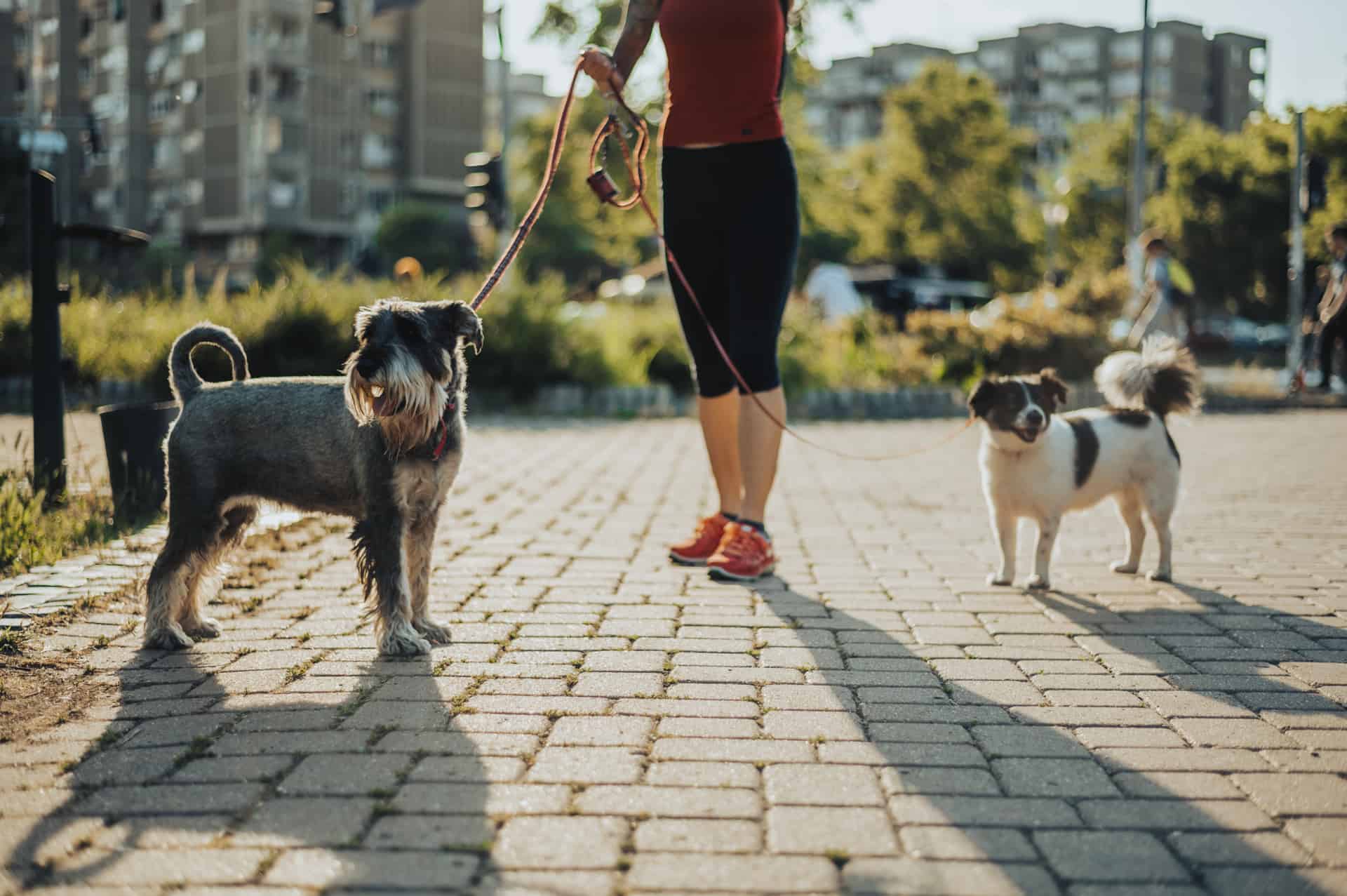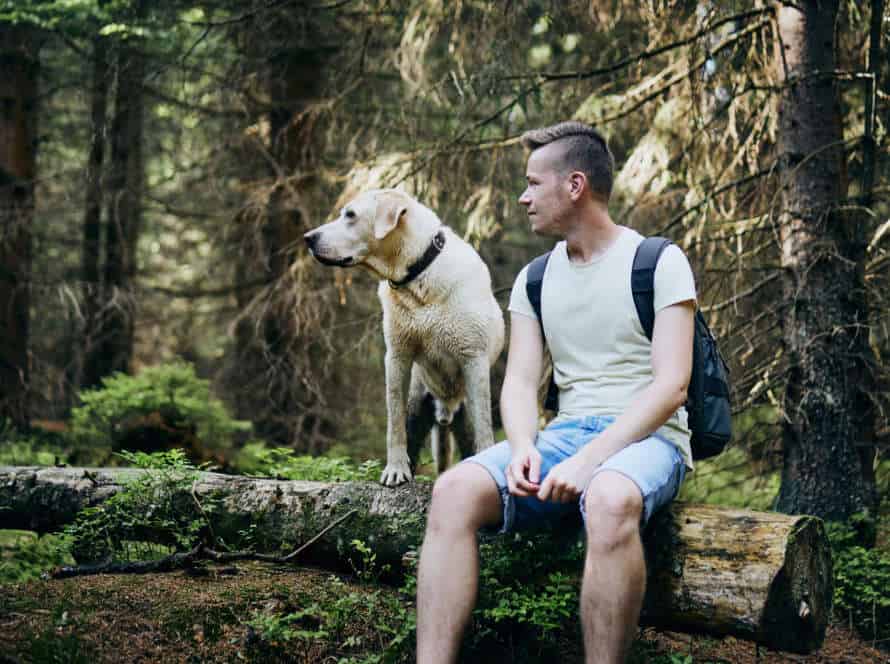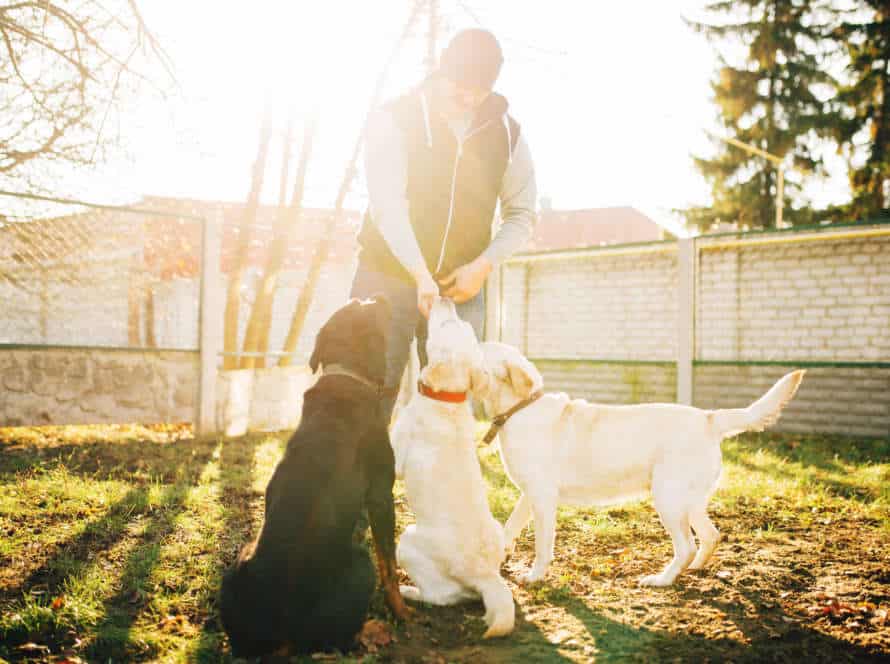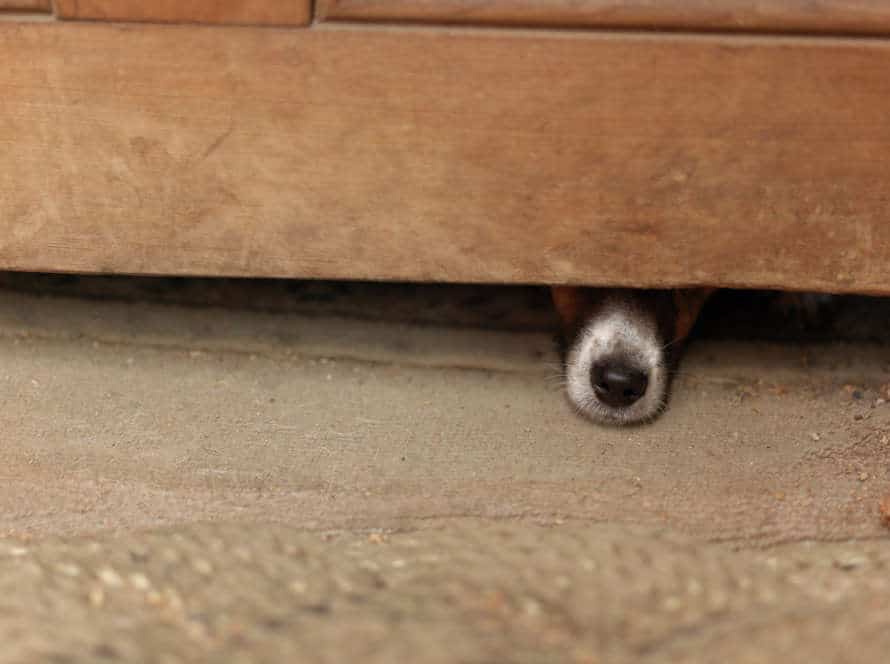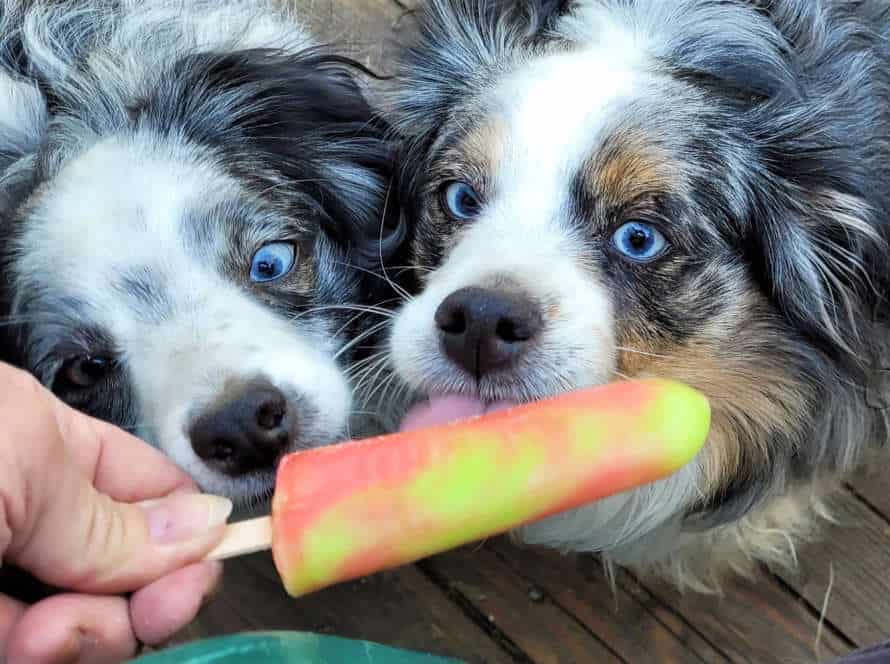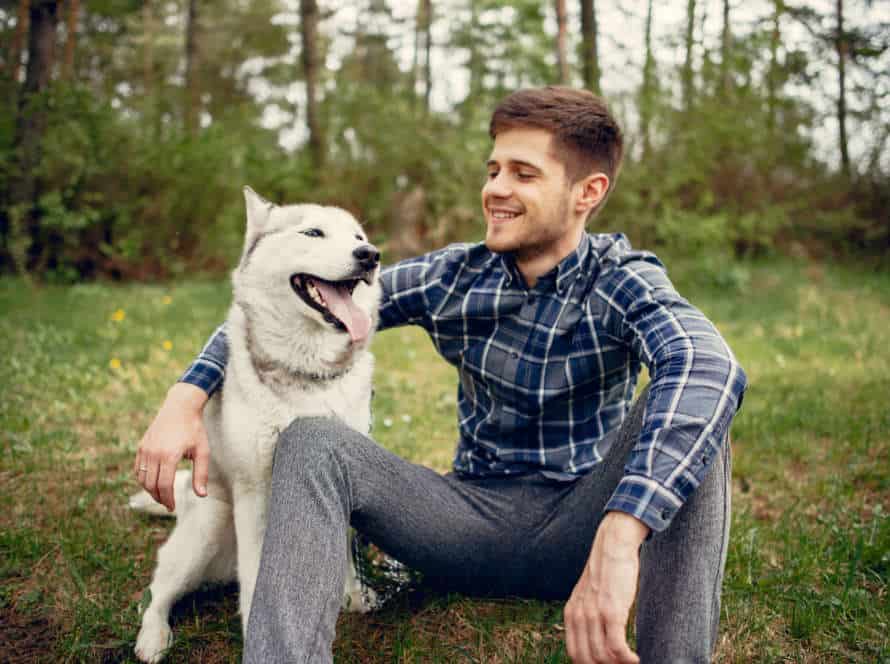Understanding Leash Reactivity in Dogs
Leash reactivity isn’t enjoyable. It’s tough to cope with. To start managing the issue, you need to get to the source of it. Think about the kind of atmosphere and walks your pup has. Also, pay attention to their body language and any warning signs. That’ll give you a better idea of why they’re leash reactive.
What is Leash Reactivity?
Leash reactivity is a common problem amongst pups. It leads to barking, lunging, or pulling on the leash aggressively when they encounter other dogs, animals or people. To manage it better, you need to understand it. Most leash-reactive dogs feel scared or defensive when something triggers them while they’re restrained by a leash. They might also use aggression as a way of coping, which just reinforces their reactive behaviour.
Tips to help manage leash reactivity:
- Exercise and mental stimulation help reduce stress and anxiety.
- Keep away from triggers that set your dog off.
- Use positive reinforcement to get your pup to focus on you.
- Distract and redirect their attention with treats or toys.
- Consult a pro for a personalised plan for your pup.
Why Do Dogs Develop Leash Reactivity?
Dogs can have leash reactivity due to various factors. Such as frustration when restrained, fear of approaching people or animals, and lack of socialization.
To help manage leash reactivity in dogs, take short walks in low-stimulus areas. Gradually increase the duration and challenge level. Use positive reinforcement techniques like treats and praise for good behavior. Consider using a front-clip harness or head collar for more control.
Seek help from a professional for intensive training and techniques. With patience and dedication, leash reactivity can be managed successfully. Improving the walking experience.
Identifying Signs of Leash Reactivity in Your Dog
Leash reactivity is a common problem dog owners face. Fear, anxiety or frustration can cause it during walks. To have a successful and stress-free walk with your pet, you need to recognize the signs and manage it.
Signs of leash reactivity may include:
- Barking, growling or lunging at other dogs or people
- Pulling and jumping on the leash
- Stress signs like panting, pacing or freezing
- Trying to run away from the trigger
- Avoiding eye contact with the trigger
Managing leash reactivity requires training and behavior modification techniques such as positive reinforcement and counter-conditioning. It’s also a good idea to work with a professional dog trainer.
Tools and Techniques for Managing Leash Reactivity
When your pup is reactive on their leash, it can be tough. Knowing the correct tools and techniques is essential for managing their reactivity. Positive reinforcement training, understanding triggers, and other strategies can assist you and your dog in achieving a calmer state. Let’s explore how these methods and tools can help you manage your dog’s leash reactivity.
Selecting the Right Collar or Harness
When it comes to managing leash reactivity in dogs, the right collar or harness is key.
Collars:
- Flat: sits around the neck
- Martingale: tightens slightly when dog pulls
- Prong: digs into the neck as a correctional tool
Harnesses:
- Front-clip: clips in the front, redirects attention and provides control
- Back-clip: clips on the back, often more comfortable
- No-pull: provides gentle pressure when dog pulls
Consider your dog’s breed, size and needs. Also, make sure the collar or harness fits properly for effectiveness and comfort.
Using Positive Reinforcement Training
Positive reinforcement training is an awesome way to manage leash reactivity in dogs. This technique focuses on rewarding the behaviors we love and ignoring or redirecting the ones we don’t.
Here are some techniques to try:
- Give treats, toys, and praise to show your pup when they’re doing something good, like staying calm and focused.
- Don’t use punishment or physical force. This can make the reactivity worse.
- Practice obedience training to build a strong bond and improve their overall behavior.
- Use barriers, like baby gates or pet doors, to keep your dog away from triggers when needed.
Patience and consistency are key! Celebrate the small victories and keep working with your pup for long-term success.
Practicing Desensitization and Counter-Conditioning
Desensitization and counter-conditioning are two powerful tools for managing leash reactivity in dogs. Desensitization means exposing the pup to triggers, like other doggos, in small amounts. Counter-conditioning changes the pup’s emotion, from fearful or aggressive to chill or positive.
Here’s how to practice:
- Find out what triggers your pup’s reaction.
- Put them at a safe distance and reward them for being calm.
- Gradually move closer, still rewarding them for staying chill.
- Repeat, increasing the exposure each time.
These techniques work best when used regularly and with other strategies. With time and practice, they help your pup stay calm on the leash.
Strategies for Preventing Leash Reactivity
Leash reactivity is a state where a pup gets overstimulated and acts out when they observe other creatures, people, or stuff. To avoid or manage leash reactivity, there are a few approaches. These include:
- Evading triggers
- Giving direct and consistent instructions
- Rewarding good behavior
Let’s look at each of these strategies and how they can assist with dealing with leash reactivity.
Routine Exercise to Reduce Anxiety and Hyperactivity
Routine exercise is great for reducing anxiety and hyperactivity in dogs. It helps stop leash reactivity. Depending on the breed and energy level, dogs need 30 minutes to 1 hour of exercise every day. Here are some ideas:
- Walking–daily walks provide mental and physical stimulation.
- Running–jogging or running is good for high-energy dogs.
- Fetch–exercise and mental stimulation.
- Agility courses–improve coordination, focus and confidence.
- Swimming–low-impact, perfect for dogs with joint pain.
It’s important to consult the vet for a safe, appropriate exercise routine.
Avoiding Triggers and High-Stress Environments
Leash reactivity is a common problem with pups that can make going on walks a challenge. To prevent leash reactivity, it’s best to avoid triggers and situations that cause stress. Here are some tips:
- Identify what makes your dog react aggressively or fearfully.
- Stay away from busy places with lots of people and dogs.
- Avoid walking your pup when there’s a lot of activity and noise.
- Give your pup space from other dogs by crossing the street or walking on the other side of the sidewalk.
- Use positive reinforcement training to make sure your pup associates other dogs with treats and praise.
With time and consistency, you can help your pup overcome leash reactivity and have a more relaxed walk.
Consistent and Clear Communication with Your Dog
Communicating with your pup clearly is key to avoiding leash reactivity. Here are a few tips that can help:
- Stay Calm: Dogs pick up on our emotions. If you’re tense, your doggo will be too. Take deep breaths and use a relaxed body position.
- Use Positive Reinforcement: Rewarding good behaviour and distracting from bad with treats, praise and toys can help you communicate better.
- Look Out for Body Language: Dogs communicate through body language. Signs of leash reactivity are barking, growling and lunging. Notice these behaviours and take steps to calm your pup.
- Walk in Safe Areas: Crowds and other dogs can be triggers. Until your pup behaves better, it’s best to walk in safe areas where you won’t encounter too many people or other dogs.
By using these strategies, you can successfully manage leash reactivity and communicate better with your dog.
Addressing Leash Reactivity in Real-Life Situations
Leash reactivity is a common issue for pet owners. Knowing how to help our furry friends can be difficult and overwhelming. Being a good pet parent involves understanding and managing leash reactivity in real-life situations. Here are some tips and strategies to help us do this! They can help our pup live a calmer, more joyful life.
Meeting Other Dogs on Walks
Walks with other dogs can be tough for both pups and their owners, especially if a pup has leash reactivity. For success, here’s some help:
- Get ready: Bring treats and a toy.
- Keep a safe distance.
- Reward good behavior with treats and praise.
- Stay confident and calm.
- Train often. Expose pup to different situations, and increase intensity over time.
Be patient, consistent and use positive reinforcement. With time, your pup will become less reactive and more relaxed around other dogs.
Preventing Leash Reactivity During Neighborhood Walks
Leash reactivity can make walks with your pup tricky. But, here are some tips to keep it peaceful.
Do:
- Reward good behavior with positive reinforcement. Eg. Sitting calmly when another pup passes by.
- Practice obedience training and commands regularly.
- Use a no-pull harness or gentle leader for better control.
Don’t:
- Yank or pull on the leash. This increases stress and anxiety.
- Force your pup into uncomfortable situations. Eg. Interactions with other dogs.
- Use retractable leashes. These make it harder to control movements.
With patience and consistency, you can manage your pup’s leash reactivity and create a positive walking experience.
Managing Reactive Behavior During Vet Visits or Other Outings
Dogs can act up during vet visits or other outings. But don’t worry! With these tips you can manage the behavior.
1. Stay calm. Dogs sense their owner’s emotion. So don’t get worked up. If your dog is struggling, try calming products like chews or sprays.
2. Loose leash. Don’t pull on the leash. Use a comfortable harness or gentle leader instead.
3. Positive reinforcement. Reward your dog for good behavior. Create a positive association with the vet or outing.
4. Desensitization. Start with small visits and let them acclimate to the environment.
These tips will help manage reactive behavior and reduce stress. Pro tip: Talk to your vet or trainer for best results.
When to Seek Professional Help for Leash Reactivity
Leash reactivity can be difficult. So, seeking professional help is a smart move. A knowledgeable, experienced trainer has the tools to help you manage your pup’s issue. Where do you find such a trainer? Here, we discuss when to seek help, and how to find the right one.
Identifying Signs That Professional Help Is Necessary
Leash reactivity in dogs can be tough to manage, but it’s not unusual. Seeking professional help can be a great help for leash reactive dogs. Here are signs that you should look out for:
- Your dog’s leash reactivity is getting worse.
- It is affecting their daily life.
- It is putting you, other people, or other dogs at risk.
- You have tried different tactics and they didn’t work.
If you notice any of these signs, it’s time to get professional help. A professional trainer or behaviorist will assess your pup’s behavior and create a plan for managing leash reactivity. Timely professional help is key for your and your pet’s well-being.
The Benefits of Seeking Out a Professional Trainer or Behaviorist
Getting a pro trainer or behaviorist can be great for controlling your pup’s leash reactivity. An expert can give you tailored tips, practical training methods, and the help you need to make long-term changes.
Here are some advantages of getting expert help for leash reactivity:
- Personalized tips: A specialist can provide advice based on your pup’s needs and your situation.
- Practical training strategies: An expert can teach you effective training techniques to help your pup learn better behaviors.
- Faster progress: With the right advice, you can make faster progress when dealing with leash reactivity and preventing future issues.
- Emotional support: Taking care of a reactive dog can be tough, and a professional can give the emotional support and encouragement to stay motivated.
Pro Tip: Look for positive reinforcement trainers who use reward-based training methods instead of punishment. These trainers use science-based methods that are both effective and humane, and they prioritize building a strong connection with your pup.
What to Expect from Working with a Professional to Address Leash Reactivity
Working with a pro can bring major improvements to your pup’s behavior. Though, it’s important to set reasonable expectations.
Age, breed, and the seriousness of the reactivity all influence progress. A pro will examine your dog’s behavior and make a personal training plan. You’ll learn techniques like counter-conditioning, desensitization, and positive reinforcement. With consistent training and patience, your pup can stay relaxed on walks. But, total elimination of leash reactivity may not always be achievable. Working with a pro is a great start to bettering your pup’s behavior. Still, it takes time, effort, and commitment.
Frequently Asked Questions
Q: What is leash reactivity in dogs?
A: Leash reactivity is a behavior demonstrated by dogs who become overly excited, anxious, or aggressive when they see other dogs or people while on a leash.
Q: What causes leash reactivity in dogs?
A: Leash reactivity can be caused by various factors such as fear, lack of socialization, previous negative experiences, or genetics.
Q: How do you manage leash reactivity in dogs?
A: Managing leash reactivity in dogs involves identifying triggers, desensitization and counter-conditioning, using positive reinforcement, and avoiding situations that may trigger the behavior.
Q: Can leash reactivity in dogs be completely cured?
A: Although leash reactivity in dogs can be managed and improved, it may not be completely cured. It requires consistent and patient training, and some dogs may need ongoing management for the rest of their lives.
Q: Is punishment an effective way to manage leash reactivity in dogs?
A: Punishment is not an effective way to manage leash reactivity in dogs. It can cause the behavior to escalate, increase anxiety and aggression, and damage the relationship between the dog and owner.
Q: Can a professional dog trainer help manage leash reactivity in dogs?
A: Yes, a professional dog trainer can help with leash reactivity in dogs by providing personalized training plans, identifying triggers, and teaching effective training techniques.

